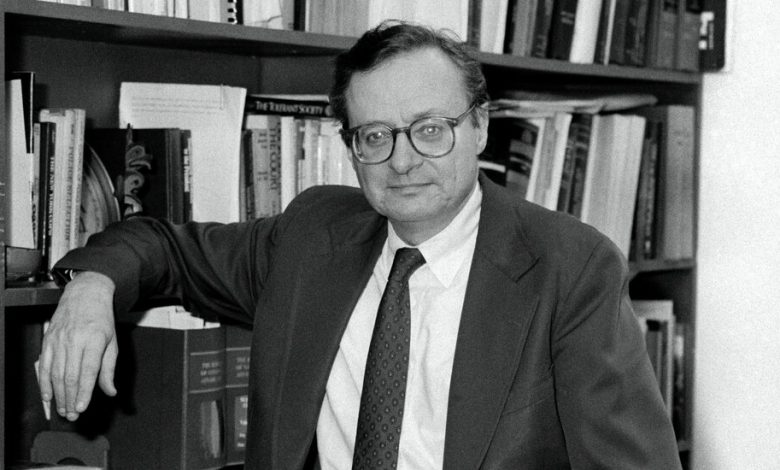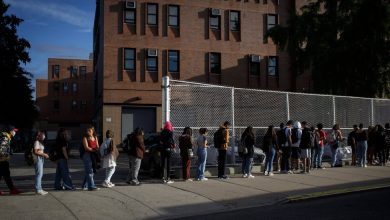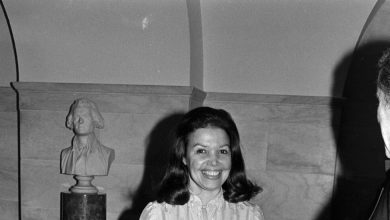Paul Chevingy, Early Voice on Police Brutality, Dies at 88

In 1964, Paul G. Chevigny left a conventional job at a Wall Street law firm to volunteer for the Freedom Summer of civil rights activism in Mississippi.
What he saw in the Deep South, where efforts to register Black voters met with violence, changed his life. He abandoned corporate law and opened the Harlem Neighborhood Legal Assistance Project on West 135th Street.
In Mississippi and in Harlem, Mr. Chevigny’s eyes were opened to a level of police brutality that was often experienced by Black residents of poor communities, but that many white Americans had no knowledge of.
In 1966 he began working for the New York Civil Liberties Union, where he became one of the nation’s foremost experts on police abuse and a leading civil rights lawyer, winning landmark cases restricting police interference with First Amendment rights.
Mr. Chevigny — who wrote a seminal book on abusive policing, “Police Power”; who defended Attica prison rioters and Black Panthers; and who as a professor at New York University Law School founded one of the first human rights clinics at an American law school — died on Monday at his home in Manhattan. He was 88.
His daughter Blue Sevigny confirmed the death.
“His major impact was on recognizing and writing powerfully about the systemic existence of police abuse,” Burt Neuborne, a former national legal director of the American Civil Liberties Union, said in an interview. “He was the first of the wave of civil rights lawyers who saw that.”
In “Police Power,” published in 1969, Mr. Chevigny wrote that, while most people probably thought of police brutality as a deliberate act, “The truth is that many incidents of the use of force by policemen bear an unfortunate resemblance to assaults by private citizens; they are hotheaded reactions to a real or imagined insult.” But premeditated or not, he maintained, police brutality extended “the police role as an instrument of authority in society.”
Mr. Chevigny’s 11 years at the New York Civil Liberties Union coincided with a fruitful era for social justice advances, shaped by a liberal judiciary open to new readings of the Constitution and by the civil rights, women’s rights and antiwar movements, which profoundly shook up society.
In addition to the weighty business of police abuse, Mr. Chevigny found time in his career to bring cases aimed at New York City’s restrictions on nightlife, based on free-expression arguments.
Colleagues described him as reminiscent of Columbo, the television detective played by Peter Falk: distracted and sometimes cranky, but far sharper than his manner suggested.
“He was always shambling around until he was standing on your throat,” Mr. Neuborne said. “When I was a very young lawyer, I went to see him argue a couple of cases. On the way to the courthouse he’d say, ‘I don’t know what I’m going to do.’ And then he’d stand up and deliver this wonderfully brilliant argument.”
In 1971, Mr. Chevigny and other lawyers sued the New York City Police Department over its surveillance of political activity, a decades-long spying campaign that came to light during a trial of members of the Black Panther Party, who were acquitted. The police’s so-called Red Squad had over the years accumulated dossiers on masses of people who had attended anti-Vietnam War protests, signed petitions, written articles or gone to meetings. After more than a decade of litigation, the city in 1985 signed a consent decree, known as the Handschu agreement, which limited police spying and undercover operations.
“His overall theme was: Who will guard the guardians? Who will watch over the people watching over us?” said Jethro M. Eisenstein, a lawyer who worked with Mr. Chevigny on the Handschu settlement, which is still in effect.
In 1977, in another important First Amendment case, Black v. Codd, Mr. Chevigny won a consent decree that gave observers of police actions the right to take pictures, write down badge numbers and make comments without being harassed or arrested.
That year, Mr. Chevigny joined the faculty at New York University Law School, where he became a full professor in 1981. He led a legal clinic in human rights, in which students represented real clients.
Along with his wife, Bell Gale Chevigny, a professor of literature at the State University of New York at Purchase, Mr. Chevigny broadened his study of police violence to third world cities. The couple were co-authors of two reports for the human rights group Americas Watch: “Police Abuses in Brazil” (1987) and “Police Violence in Argentina” (1991).
In 1995, Mr. Chevigny published a second influential book, “Edge of the Knife,’’ an ambitious study of police violence in six cities in the Americas.
“I felt I had a kind of mission with the police problem,” he said in an interview with The New York Times in 1988. “It seemed to me that police abuses were the result of some systemic social problem. I found that society wasn’t generous enough to solve its inequalities, so it demands a certain amount of control, and it calls on the police to do its dirty work.”
All his life, Mr. Sevigny was an aficionado of jazz and blues. In the 1980s, during a visit to a jazz club on the Upper West Side, he learned about the city’s Prohibition-era Cabaret Law.
That law required any venue where music or dancing took place and food was served to be licensed. Bars and restaurants that had live music could operate without a license, but only if the music they presented was “incidental” — which the law defined as no more than three performers and three types of instrument on a stage at once.
For years, club owners and musicians had tried to repeal the ordinance. Mr. Sevigny came up with the idea of a legal challenge on First Amendment grounds.
A Manhattan Supreme Court judge ruled in two decisions, in 1986 and 1988, for Mr. Sevigny’s plaintiffs — a vibraphonist, trumpeter and singer — that the Cabaret Law violated musicians’ rights to free expression. Mr. Sevigny became a celebrity in clubs around town.
Paul Graves Chevigny was born on July 12, 1935, in Seattle. His father, Hector Chevigny, was a writer of radio plays. His mother, Claire (Graves) Chevigny, was a newspaper columnist and schoolteacher.
Mr. Chevigny graduated from Yale College in 1957 and Harvard Law School in 1960. After 57 years of marriage, his wife died in 2021. In addition to his daughter Blue, he is survived by another daughter, Katy Chevigny, and two grandchildren.
In middle age, Mr. Chevigny took up tap dancing after watching a class one of his daughters was taking. He was inspired to revisit a part of the Cabaret Law, which still stood, prohibiting dancing in bars and restaurants without a license.
Once again, he brought suit, arguing that dancing is free expression protected by the New York State Constitution. The court ruled against Mr. Chevigny in 2006, although the judge urged lawmakers to take up the issue, writing, “Surely, the Big Apple is big enough to find a way to let people dance.”
The City Council repealed the dance ban in 2017.





